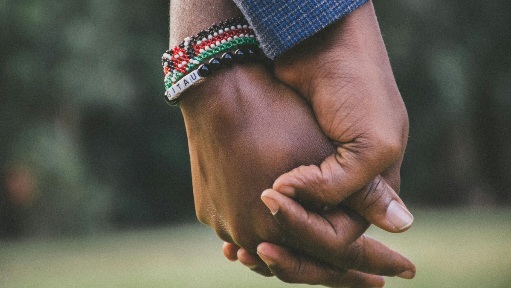Picture this scenario: It's date night, and Anna's heart sinks as her boyfriend Alex cancels at the last minute again because he's too stressed out and tired to go out and just wants to play his video game. This has become a pattern recently, with Alex withdrawing more into his own world.
Anna feels a now-familiar ache—torn between wanting to be close to Alex when he pulls away and also feeling like pushing him further away in anger. She craves intimacy and reassurance but doesn't want to appear "needy."
Understanding Anxious-Ambivalent Attachment
This push and pull in Anna's relationship reflects the dynamics of anxious-ambivalent attachment, a style we often develop in childhood. According to attachment theory pioneer John Bowlby, our early life experiences with caregivers shape an "internal working model" that guides how we relate in close relationships. Different attachment styles emerge.
To know more about attachment styles, read here: The 4 Attachment Styles and How They Affect Your Relationships
You can also watch here:
So basically, those with anxious-ambivalent (anxious-preoccupied) attachment crave emotional intimacy but also feel insecure and sensitive to rejection. Their close relationships are marked by a preoccupation with their partner's availability and inconsistent nurturing responses.
Those with this attachment style have an almost desperate desire to be close with their partners and constantly receive reassurance. This reflects a lack of emotional security and a need for external validation. They seek extreme closeness to soothe their anxiety.
However, this need for intimacy wars with an equally intense fear of loss—of opening up too much only to be rejected, or of letting someone get so close that they "swallow you whole." Their concern about abandonment fuels hypervigilance to any signs their partner is unavailable or pulling away.
This leaves them caught in a constant push-pull—desperately seeking closeness to ease their insecurity, then feeling engulfed and pulling away for self-protection. They swing between clinging when anxious and withdrawing when frightened of losing autonomy. Finding a balance between intimacy and independence is a core challenge.
How does an Anxious-Ambivalent Attachment Style Develop?
An anxious-ambivalent attachment style typically develops when a child has a caregiver that is inconsistent or unpredictable in meeting their needs. Some of the key things that can contribute to this attachment style forming include:
- The caregiver is sometimes responsive and nurturing, but other times she is dismissive or unavailable. This leads the child to feel anxious about when their needs will be met.
- The caregiver may reject or rebuff the child's bids for attention and affection at times. This leaves the child uncertain about the reliability of the caregiver.
- When the caregiver does respond, it is not always in a timely manner. For example, the child may get very distressed before the caregiver finally intervenes to soothe them.
- The caregiver may threaten to withdraw love and affection when the child doesn't behave a certain way. This makes the child preoccupied with the caregiver's approval.
- There is not a consistent pattern or rhythm to the caregiver's availability and nurturing. The unpredictability leaves the child in an almost constant state of uncertainty and anxiety.
- The caregiver's emotional states and responses may seem unpredictable to the child as well.
In summary, it is the inconsistency in the caregiver meeting the child's attachment needs that contributes greatly to an anxious-ambivalent attachment forming. This leaves the child anxious about separation and preoccupied with their caregiver's availability and responsiveness.
Signs of Anxious-Ambivalent Attachment Style
Here are some common signs of anxious-ambivalent attachment and an expansion on each:
1. Intense jealousy
People with anxious attachment often struggle with intense jealousy over their partner's time, attention, and perceived attraction to others. Any interactions their partner has outside the relationship can evoke feelings of insecurity, fear of abandonment, and envy. Their jealousy stems from a worldview of scarcity around love and constant need for reassurance.
2. Clinginess
Anxious-ambivalents frequently exhibit clingy behavior and an overwhelming preoccupation with their partner. They have a strong dependency on the relationship for self-worth and emotional stability. Clinginess reflects both their craving for closeness and fear of separation from their partner. They may insist on constant contact and shared activities.
3. Mixed signals
The hot-and-cold dynamic of anxious attachment leads to inconsistent, mixed signals. One day they are affectionate, the next aloof. They may alternately pursue intimacy and create conflict. This leaves partners confused by capriciousness. Mixed signals ensue as they struggle between needs for closeness and distance.
4. Frequent reassurance seeking
Those with anxious attachment often excessively seek reassurance about their relationship. They constantly ask if their partner truly loves them and want validation they are cared for. Reassurance eases their feelings of self-doubt and anxiety over the relationship. But the relief is only temporary before doubts creep back in.
Impact of Anxious-Ambivalent Attachment on Relationships

Anxious-ambivalent attachment style takes a major toll on adult romantic relationships. The constant push and pull between needing intimacy and fearing engulfment creates relationship instability and insecurity.
Key impacts include:
- Trust issues - Their abandonment fears make it difficult to develop secure trust in a partner's reliability and dependability. Hypervigilance for signs of disinterest undermines trust.
- Communication breakdowns - Frequent demands for reassurance, moodiness, and mixed messages lead to poor communication. Partners may become reluctant to share feelings and withdraw.
- Destabilizing behaviors - Impulsivity, excessive contact attempts, and emotional reactivity disrupt relationship rhythm and stability.
- Conflict escalation - Insecurity fuels perceived slights and criticism that spiral into arguments. Jealousy and clinginess also ignite conflicts.
- Enmeshment - Blurred boundaries between self and partner can create an unhealthy enmeshment where the anxious individual cannot self-soothe.
- Disconnected intimacy - While sex may satisfy their intimacy needs temporarily, the emotional instability hinders true vulnerability and bonding during sex.
Overall, anxious-ambivalent dynamics propagate distressing relationship patterns that feel unsatisfying to both partners. Foundational work is required to cultivate secure bonding.
Tips for Partners of Anxious-Ambivalent Individuals
If you have a partner with an anxious-ambivalent attachment style, follow these tips:
Practice Empathy
Understand that their excessive worries about the relationship stem from past hurts, abandonments, and betrayals. Their clinginess or distrust is not a personal attack on you. Practice compassion for their underlying pain and insecurity.
For example: "I know you get worried when I'm out late with friends. It's not that you don't trust me, those fears come from past experiences of people leaving you."
Set Healthy Boundaries
Gently reinforce boundaries around space, alone time, social lives outside the relationship, and reassurance-seeking habits. Stick to your boundaries while also clearly expressing love and availability. Consistent boundaries ease anxiety.
For example, "I'm happy to text you when I get to my friend's house, but I won't be able to text you throughout the night."
Account for Their Emotional Needs
Truly making an anxious-ambivalent partner feel loved and secure may require more verbal affirmation, physical affection, quality time together, and emotional availability than comes naturally to you. Make adjustments to accommodate their needs.
Avoid Over functioning
Don't get enmeshed in their anxieties and insecurities by trying to overcompensate. Stay grounded in your own identity and avoid taking responsibility for their emotional state. Model healthy self-reliance.
Watch for Projective Identification
Be aware of unintentionally taking on their abandoned feelings or becoming avoidant/withdrawn in reaction to their anxiety and neediness. It's like a game of emotional hot potato, where the real feelings keep getting passed around without anyone really knowing what's going on.
For example:
Wife: "You don't love me anymore! You're so selfish and inconsiderate!"
Husband: "But I didn't do anything! This is coming out of nowhere..."
In this case, the wife projects her insecurity onto her husband by accusing him of the very thing she fears. It's like she throws her fear, hoping he'll catch it and deal with it. The problem is, the husband doesn't understand the potato toss. He feels attacked and confused, which might trigger his own feelings or lead to arguments. Instead of a happy game of catch, things can get messy.
Remember to maintain self-awareness.
Encourage Autonomy
Lovingly build their confidence in self-soothing techniques, enjoying alone time, and tolerating some separation from you. This eases reliance on you for stability. Affirm them as you encourage healthy autonomy.
Validate Emotions
When expressed in a healthy manner, validate their emotions without reinforcing clinginess or withdrawal. Empathize while still maintaining boundaries.
For example, "I understand you felt really hurt that I canceled our plans. Your feelings make sense to me."
Build Communication
Practice open, patient dialogue focused on understanding each other's attachment wounds and needs. Create a safe space to share vulnerabilities and negotiate each person's needs.
You can scheduling weekly check-ins to lovingly share vulnerabilities, feelings, and relationship needs using the Couply app.
Seek Secure Attachment
Read educational books, take courses, or get counseling together to foster earned security. Healing past attachment wounds and developing new relational skills cultivates healthy, stable relating.
Self-Care for Individuals with Anxious-Ambivalent Attachment

If you have anxious-ambivalent attachment style, your partner should not be the only one adjusting and giving an effort to you. Compromise is key.
Here are some tips for self-care and personal growth for individuals with an anxious-ambivalent attachment style:
Get therapy
Work with an experienced therapist who specializes in attachment theory and interpersonal relationships. Therapy provides a safe space to explore your relationship wounds, identify core fears and needs, and cultivate new relational skills over time.
Practice mindfulness
Incorporate mindfulness practices like meditation, yoga, breathing exercises, and spending time in nature. These activities activate the parasympathetic nervous system which counters anxiety and promotes secure bonding behaviors like staying calmly present.
Focus on self-soothing
Build your capacity to self-soothe anxiety and get your needs met independently so you don't have to rely solely on your partner. Nurture supportive friendships, creative hobbies, relaxation rituals - activities that meet your needs for connection and security.
Identify your triggers
Get very clear on the situations that tend to trigger your abandonment fears - certain phrases, extended time apart, plans changing unexpectedly. Have healthy coping strategies ready when those triggers arise.
Communicate needs clearly
Learn to express your attachment needs and feelings in direct language focused on mutual understanding rather than accusations or passive aggression. Practice vulnerable communication.
Build your autonomy
Challenge yourself to slowly expand your comfort zone for enjoying time alone and discovering interests separate from your partner. Take incremental steps practicing autonomy while handling anxiety skillfully.
Work on emotional regulation
When you feel heightened emotions like anger or panic rising, pause to employ calming techniques - deep breathing, visualization, centering prayer. Manage anxiety spikes and impulses effectively.
Stay self-aware
Notice when attachment fears get activated within you. Reflect on how they affect your perceptions of your partner's behavior, your impulses to react, and the dynamics they feed. Cultivate insight.
Understanding anxious-ambivalent attachment is the key for anyone who struggles with fears of abandonment, clinginess, or instability in their close relationships. While early attachment wounds are challenging to overcome, growth is absolutely possible. With insight, communication skills, boundaries, and compassion, both individuals and their partners can cultivate more secure bonds. There are ample resources available to help you on this healing journey.
At its core, anxious attachment stems from a longing to love and be loved in an imperfect world. Though difficult, adopting new relating strategies can transform insecure attachment into the profound intimacy and belonging we all deeply desire. By learning to balance vulnerability and autonomy, you can rewrite old attachment patterns and create the healthy, nurturing relationships you deserve.
About the Author

Sheravi Mae Galang is a Content Coordinator for the Couply app. Couply was created to help couples improve their relationships. Couply has over 300,000 words of relationship quizzes, questions, couples games, and date ideas and helps over 400,000 people.
Sheravi enjoys wring and is currently studying at the Cebu Institute of Technology - University for her current pursuit of a Master's Degree in Clinical Psychology. You can connect with her through email (sheravimaegalang@gmail.com).








